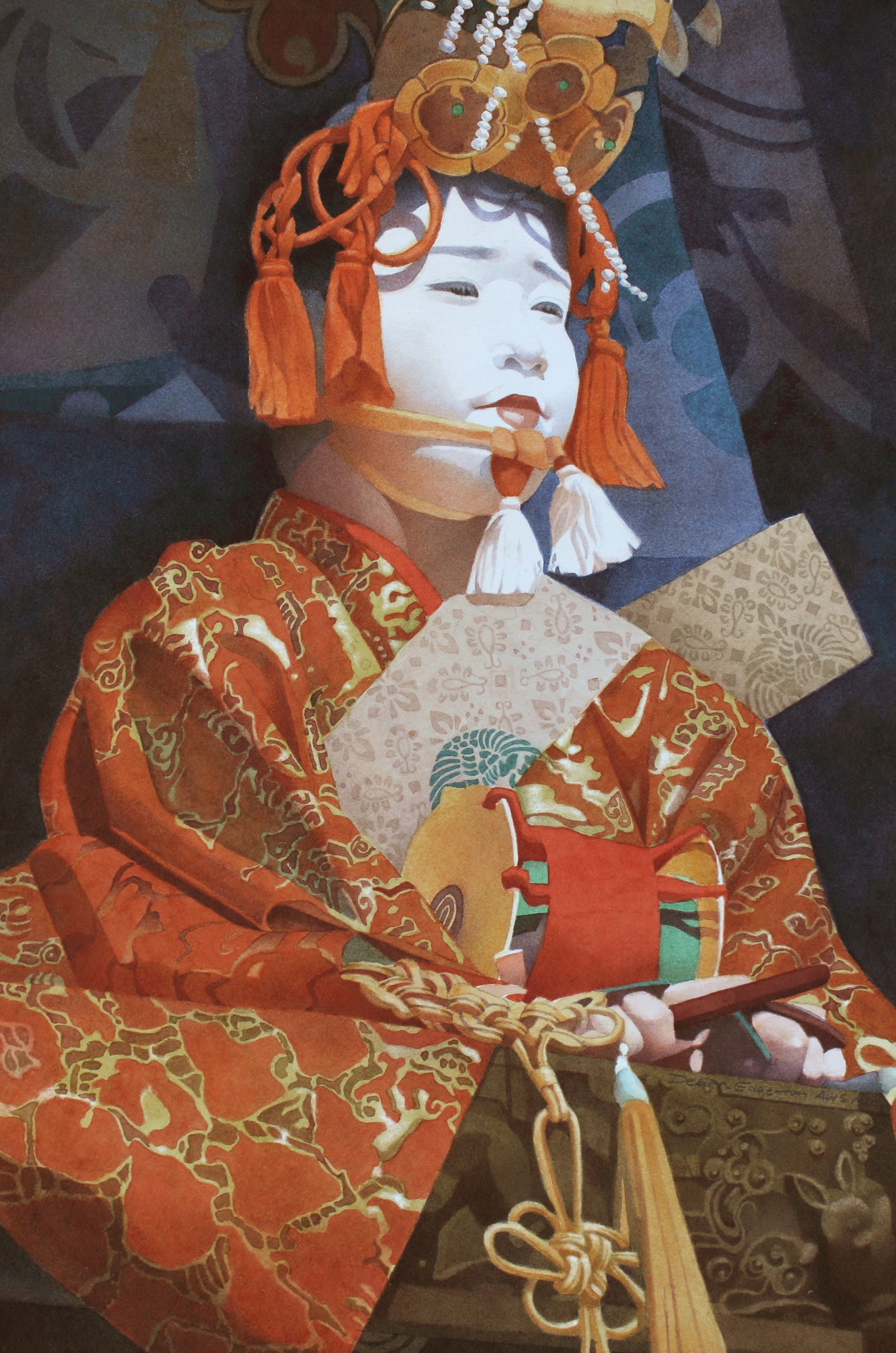Matsuri
Debra Edgerton’s art is focused on defining personal and cultural identity through the examination of place and stories, reclaiming imagery, and the deconstruction and reconstruction of personal narratives. The Matsuri (Festival) series conveys the rich cultural heritage of Japan (her mother’s homeland) through traditional seasonal celebrations. As a child in her parent’s home, her mother shared treasured mementos of her life in Japan; Japanese dolls, kimonos, and other small items. But in the United States these had no context beyond the relationship with her mother. The series emerged from Edgerton’s first visit to Japan when she was able to begin putting the traditions that her Japanese mother would have celebrated as a young girl, and later brought to their family, into a larger and more meaningful context. Her time in Japan also helped Edgerton to understand that part of herself derived from her mother and her culture.
The Japanese children depicted in the paintings are observers of, and participants in, a variety of festivals. The austere beauty created by their white face makeup (oshiroi) conveys a sense of anonymity and they stand in isolation, as if Edgerton herself is an outsider looking on to an unseen, yet wonderous scene. Contributing to the sense of separation is a visual tension created by the abstract nature of the simplified forms and space of the paintings. The sensory experience created by Edgerton’s rich color and dynamic compositions draw us into the scene, but ultimately, we remain observers ourselves.






